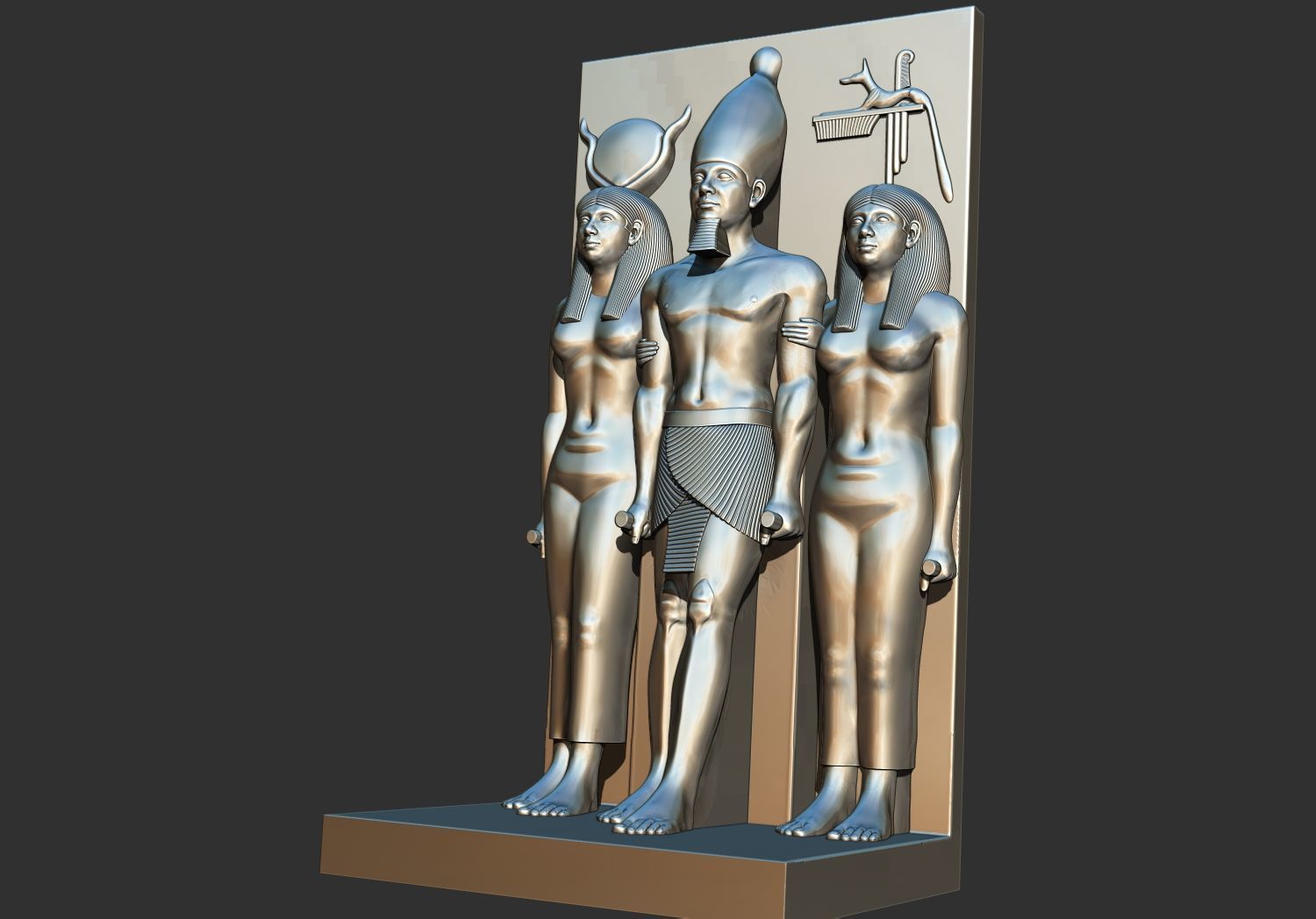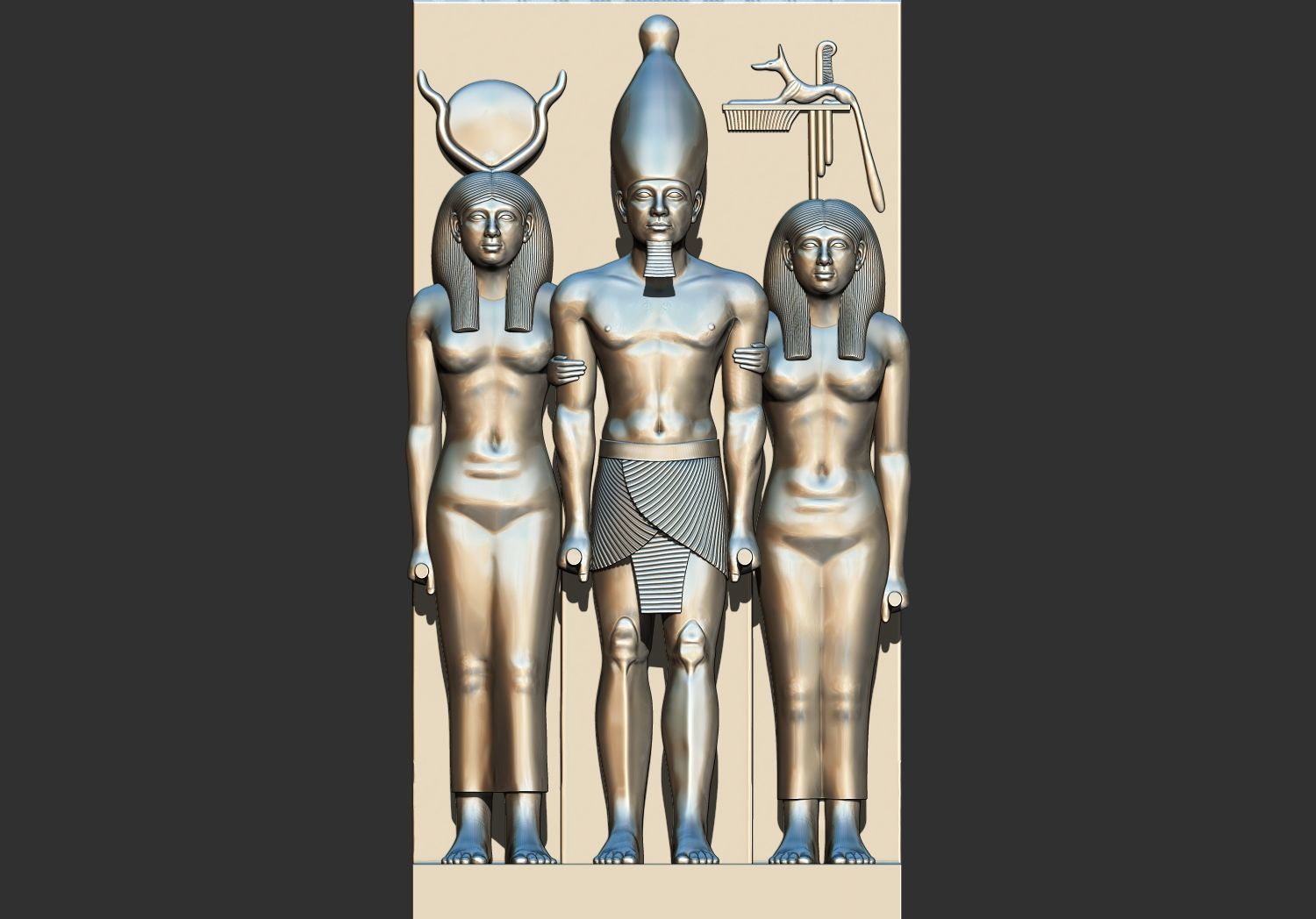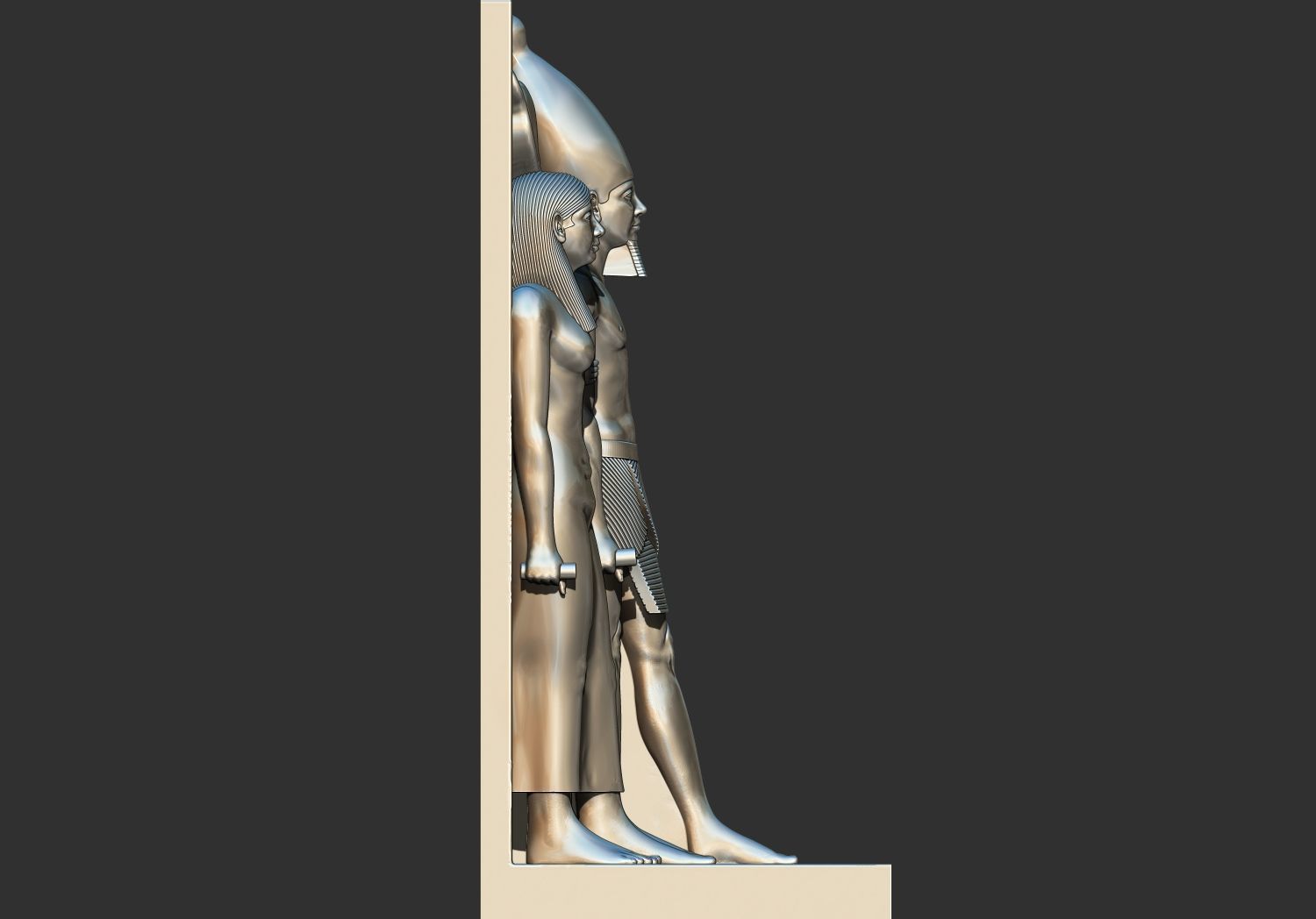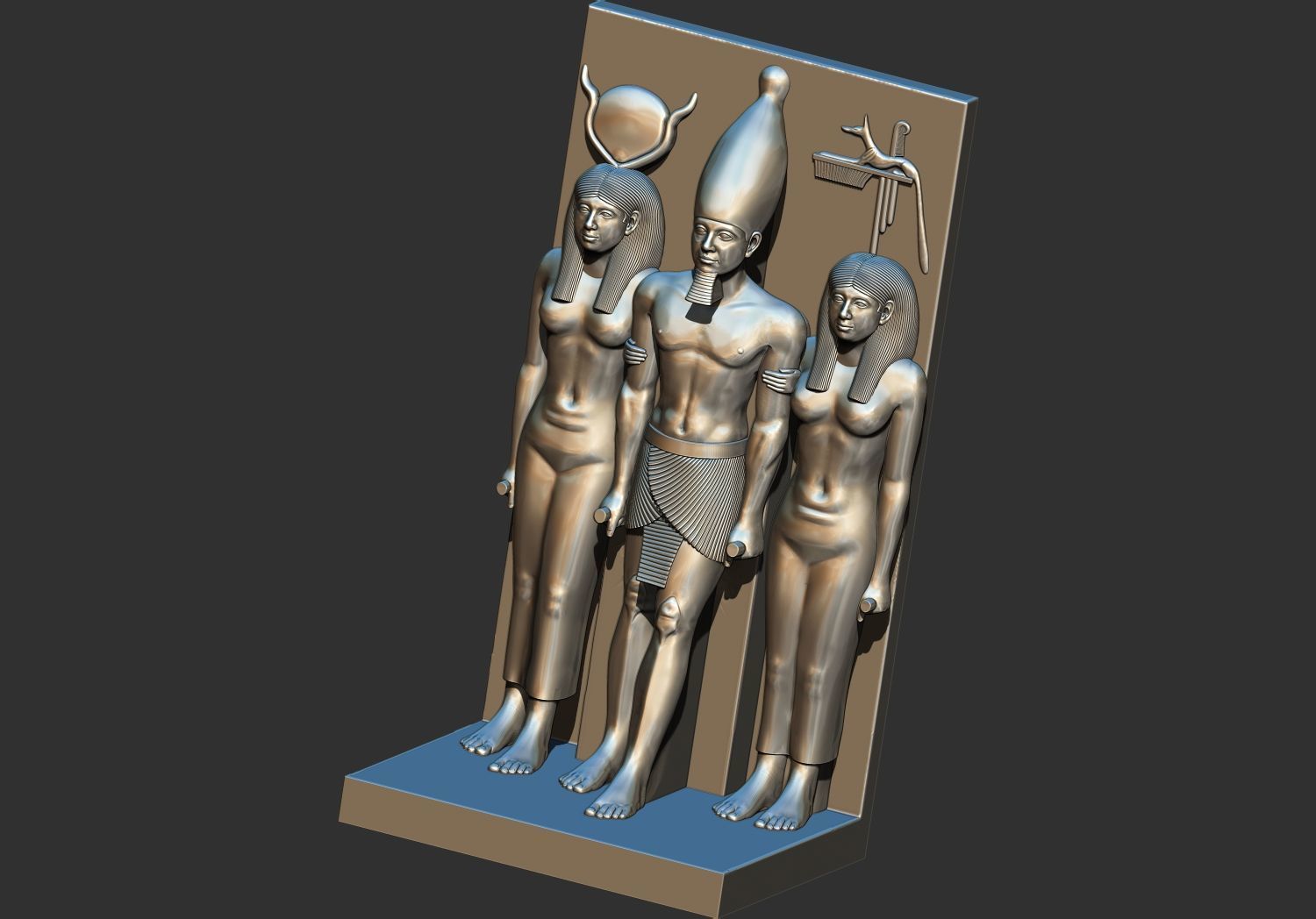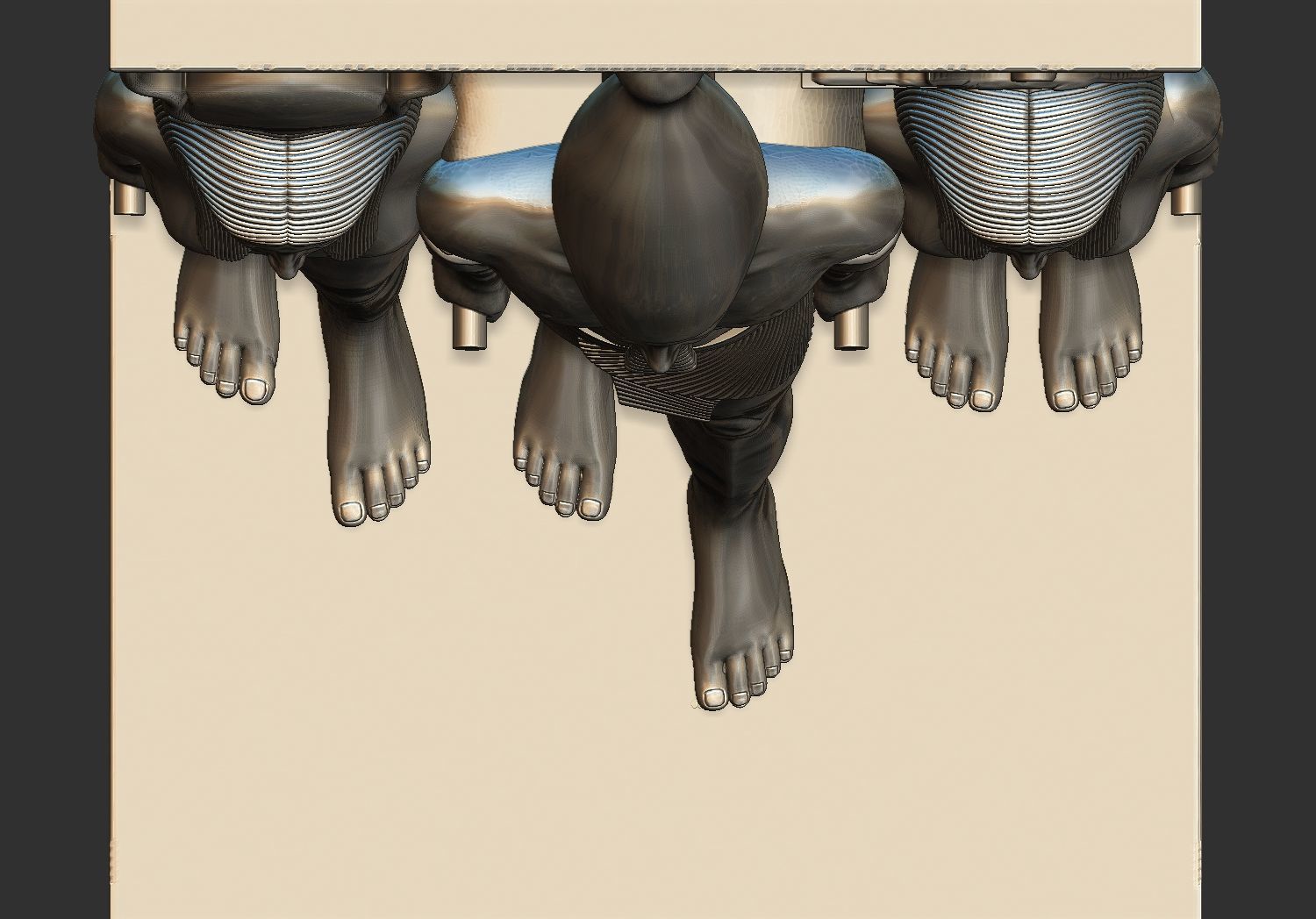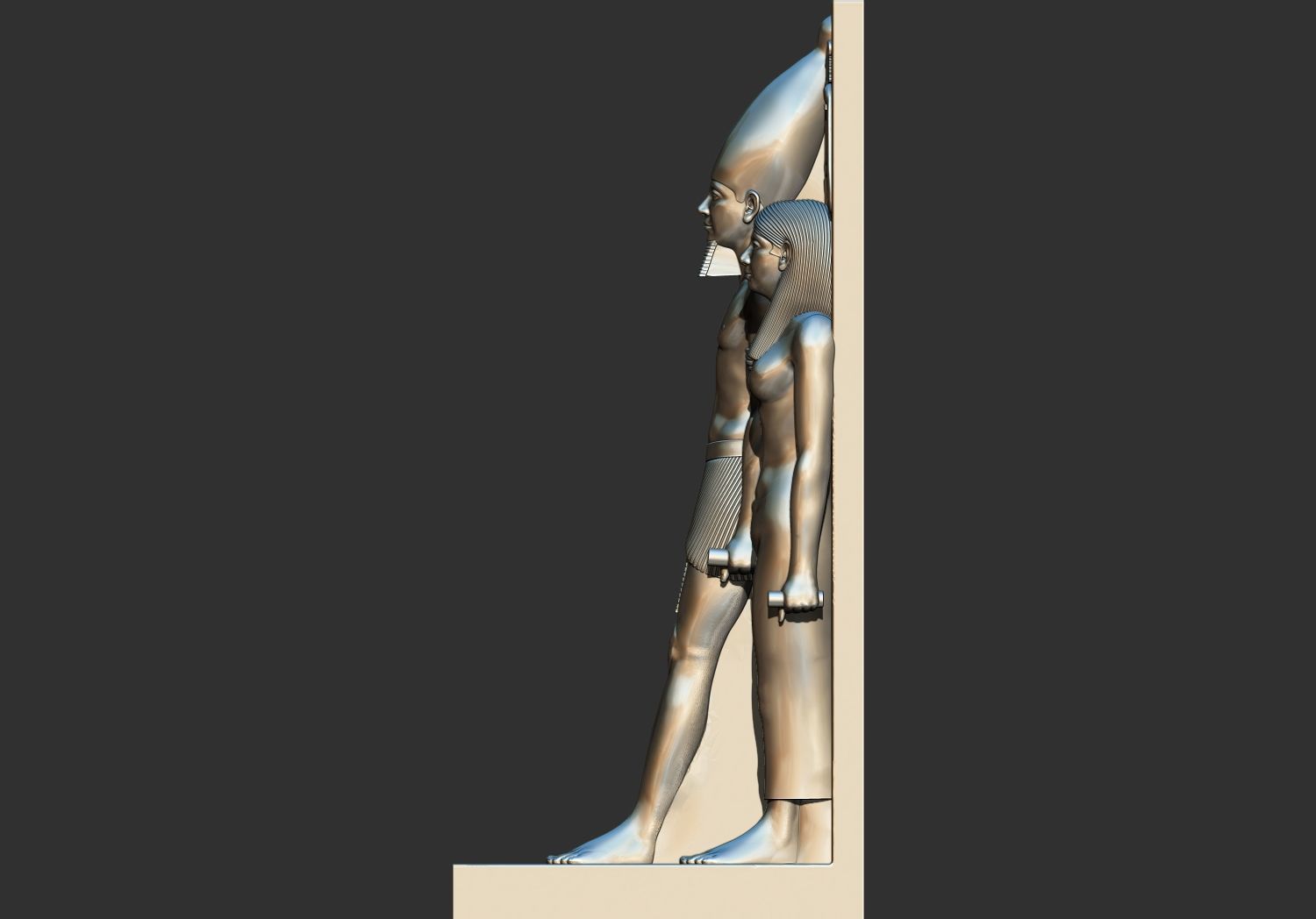
Egyptian Pharaoh Triad of Menkaure statues 3D Printable Model 3D print model
Triad of Hathor, Mykerinos, and Diospolis
During the excavations conducted between 1908 and 1910 at the Valley Temple of Mykerinos' funerary complex in Giza, several group statues were discovered, some intact and others in fragments. These statues depict King Mykerinos at the center, flanked on his right by the goddess Hathor and on his left by a deity representing a province.
The representation includes Mykerinos, Hathor, and the goddess associated with the province of Diospolis.
Mykerinos is portrayed as slightly taller than Hathor and significantly taller than the provincial deity beside him. He is adorned with the White Crown, symbolizing Upper Egypt, along with a false beard and a tri-partite skirt. His facial features are characteristic of his depictions, featuring distinctly marked eyes, high cheekbones, and a firm mouth and nose. In accordance with traditional representation, Mykerinos is depicted striding forward with his left foot advanced.
Hathor is illustrated as a woman crowned with the iconic cow's horns and solar disk. She is dressed in a form-fitting garment, with the hem visible just above her feet. Her facial structure is rounder and more feminine compared to that of Mykerinos, and while her left foot is also slightly advanced, it is not as pronounced as his.
The provincial goddess is depicted wearing a headdress that signifies her association with Diospolis in Upper Egypt.
For a considerable time, it was believed that the number of group statues corresponded to the 42 provinces of Egypt. However, recent scholarship suggests that there were only eight statues, each representing a province with a significant cult dedicated to Hathor.


